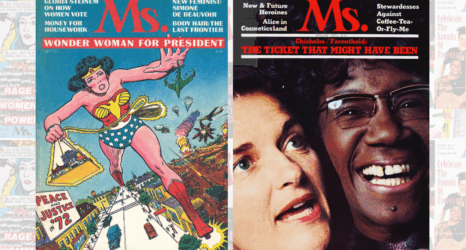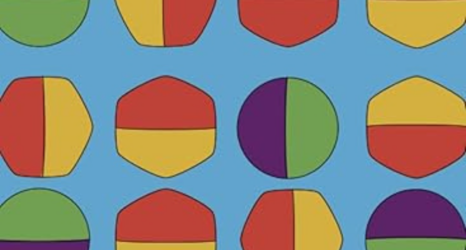Sara Ahmed’s newly published book Living a Feminist Life is a book for women in all walks of their feminist journey. Ahmed, an acclaimed author whose area of studies includes feminist theory, queer theory, critical race theory and postcolonialism, weaves intersectionality throughout as she discusses her own personal experiences as a lesbian of color in addition to discussing topics of racism, queer theory and disability.
The book’s cover is an immediate eye-catcher: a vivid, powerful image depicting an arm and clenched fist entangled in the Venus symbol. A call of action. My book’s copy is full of dog-eared pages and underlined quotations and jam-packed with notes.
In Living, Ahmed works to bring feminism home by discussing feminist theory in the context of women’s everyday lives. This is feminism for the real world–for busy, working women. Who has time to be an academic feminist? Ahmed realizes that many women are not at home in the academy so often times, academic language and theory discussions can feel alienating. Her hope in Living is to make feminism and feminist theory accessible and attainable by simply showing “how feminist theory is what we do when we live our lives in a feminist way.”
At times, Ahmed’s examples are long winded and her chapter’s enthusiasm seems faded towards the end, but her persuasive and inspiring writing style urges us to join the movement. Her grounded and familiar perspective of everyday women is a fun and easy read.
I appreciated Ahmed’s numerous references to material feminism throughout the entirety of the book. When you refer to structures, glass ceilings or the brick walls for example, some may think that it is fabricated; as such, your thoughts are dismissed. Materiality would argue that these glass ceilings and brick walls are real. Walls are defense mechanisms that block movement and stop history – this history becomes concrete. Sexual harassment is also material. Her inclusion of materiality throughout Living helps emphasize that feminism is present and physical in our daily lives.
Ahmed says that it’s time for us to take off our rose-tinted glasses and critically analyze our daily lives by challenging “ordinary and every day sexism,” re-describing the world we live in as women. Feminism is how women pick each other up in an unjust and unequal world by asking ethical questions, creating relationships with others that are more equal, finding ways to support those that are not supported or less supported and learning to break through historical patriarchal walls. Ahmed defines the feminist movement as a way to of bringing people into the room, creating conversation and pushing women to think about what they consider the norms in their daily lives. The feminist movement, she says, is “necessary because of what has not ended.” This collective, political movement is all about creating ripples in the water; created by an agitation to challenge our everyday lives.
A feminist movement thus requires that we acquire feminist tendencies which Ahmed describes as a willful, snappy killjoy. In Living, Ahmed expands upon her use of the “killjoy” concept from her earlier works. “To become feminist is to kill other people’s joy,” she writes, “to get in the way of other people’s investments.” It is about uncovering and exposing the sexism that surrounds us. We may have to step up and kill the joy of others in order to pave a better path for us and others in a world that isn’t designed for women who are willing to speak up and be willful. Willfulness can bring up some negative emotions surrounding assertion and persuasion for women as “willfulness is assigned to girls because girls are not supposed to have a will of their own,” but Ahmed instead flips the rhetoric and elevates this definition. Unlike the forces of our society, Ahmed calls on feminists to be willful.
Killing joy and being willful might mean stopping a conversation, a joke or refusing to smile–resisting participating in a sexist culture. “Willfulness becomes a style of politics when we were not willing to go with the flow,” Ahmed explains, “when we are willing to cause an obstruction.” Feminists need to acquire willful tongues and speak out in order to resist being straightened out.
Ahmed also illustrates how diversity and feminism go hand in hand, utilizing her personal experience working as a diversity officer in student development on a college campus to make this point. It is exciting to see Ahmed address the intersectionality of diversity and feminism on a university student development level–an area often overlooked. Ahmed’s diversity definition is two fold: “First diversity work is the work we do when we are attempting to transform an institution,” she writes, “and second diversity work is the work we do when we do not quite inhabit the norms of an institution.” Ahmed encourages us to take her experience as a diversity officer and situate it in our daily lives, posing questions that allow us to dig deep. “Think of this: how we learn about worlds when they do not accommodate us,” she tells her readers. “Think of the kinds of experiences you have when you are not expected to be here.”
Not only do feminists need to be willful killjoys, but they also need to be snappy, Ahmed says, pointing out that “maybe there is a relation between willful and snapful.” Being snappy could mean a breaking point or a snapping point. Ahmed’s form of feminist snap came when she left an academic position that asked her to bear too much, with little support and continuous walls. By snapping she made the statement that she did not want to reproduce a world that she could no longer bear. “Perhaps snappiness might be required to right a wrong,” she says, “when a wrong requires we bear it; that we take it, or that we take more of it.” She urges us to consider what our own snap was or will be.
Ahmed concludes with a depiction of her feminist survival kit: a form of feminist self-care. The monogram on the outside of her survival kit says, “feminism needs feminists to survive.” The kit is built from past experiences that have provided resources and tools for perseverance. Books, tools, permission slips, other killjoys and humor are just a few of the items that make up the kit. She urges us to dive into classic feminist texts, to carry our keyboards and journals in order to record our thoughts and feelings. We need to keep our permission slips and sick notes handy–every woman needs a break and a time to check out. Feminists need to surround themselves with good company and seek out other killjoys that can continue to provide support. Life in a patriarchal society can be challenging and painful, so we all need a good laugh and humor to make things just a little lighter. Laughing with other women can lighten the load on our hearts.
Feminism is homework. (Self-assigned.) We must task ourselves with the assignments that urge us to dig deeper, helping us transform our personal and work lives. Living is a true call to action. “We are willing to participate in a killjoy movement,” she writes defiantly. “We are that movement. Watch us roll.”





